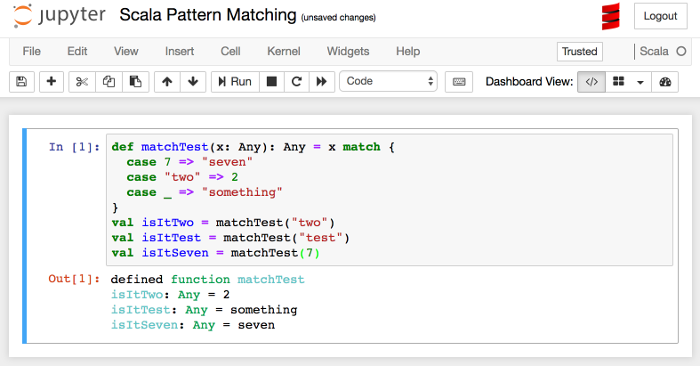Scala has very useful, built-in pattern matching. Pattern matching can be used to test for exact and/or partial matches of entire values, parts of objects, you name it.
We can use this sample script for reference:
def matchTest(x: Any): Any = x match {
case 7 => "seven"
case "two" => 2
case _ => "something"
}
val isItTwo = matchTest("two")
val isItTest = matchTest("test")
val isItSeven = matchTest(7) We define a function called matchTest. The matchTest function takes any kind of argument and can return any type of result. (Not sure if that is real-life programming).
The keyword of interest is match. This means the function will walk down the list of choices until it gets a match on to the x value passed and then returns.
As you can see, we have numbers and strings as input and output.
The last case statement is a wildcard, and _ is catchall, meaning that if the code gets that far, it will match any argument.
We can see the output as follows:




